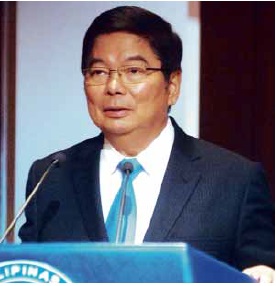MANILA, Philippines–Interest rates were kept on hold on Thursday, with the central bank allowing the cost of money to stay near record lows as the threat of rising consumer prices ebbed.
Monetary officials noted that consumer prices were expected to stay stable this year, helped along by cheap fuel and the steadier supply of food and other commodities due to the resolution of port problems that caused headaches in 2014.
Despite the confidence, the Bangko Sentral ng Pilipinas (BSP) warned of the possible impact of the US Federal Reserve’s expected decision to hike its funds rate later this year.
The effects of a reversal in fuel prices are also being watched.
“Inflation pressures have moderated further since the previous monetary policy meeting, reflecting mainly the significant decline in international oil prices,” BSP Governor Amando M. Tetangco Jr. said after the year’s first policy meeting Thursday.
The overnight borrowing and lending rates were kept at 4 and 6 percent, respectively.
Other policy levers such as yields of special deposit account (SDA) and deposit reserve requirements for banks were also kept steady.
Analysts polled by the Inquirer earlier this week were unanimous in saying the BSP would keep its present settings.
Inflation forecasts for this year and the next were also revised to 2.3 percent, versus the previous 3 percent, and 2.5 percent, previously set at 2.6 percent, respectively. The projections hinge on international fuel prices staying roughly where they are—at around $50 to $60 per barrel—for the next 24 months.
Deputy Governor Diwa C. Guinigundo said the BSP was wary of a correction in fuel prices.
“Producers have reduced the number of oil rigs. Companies have reduced capital investment. What do we expect? It’s possible you will have oil prices correcting sooner or later,” he said during a briefing.
Apart from uncertainty over fuel prices, Guinigundo also cited the possible risks that could come with the US Fed’s rate hike. Market players have priced in the effects for the middle of 2015. This may result in mounting pressure for the peso to depreciate, making imported goods more expensive.
Guinigundo said this could trigger capital flight from the country as investors move their cash back to the United States, where yields may start to improve.
He added that this could be offset by accommodative measures being put in place by central banks in Europe and Japan.
“While the US Fed is expected to tighten policy this year, Europe and Japan will be going in the other direction. That could drive capital out of those jurisdictions,” Guinigundo explained.
“We expect capital to look for a good place to invest, and they will look at fundamentals of emerging markets,” he added.
The natural choice for foreign investors, Guinigundo said, is be the Philippines, one of Asia’s fastest-growing economies.
